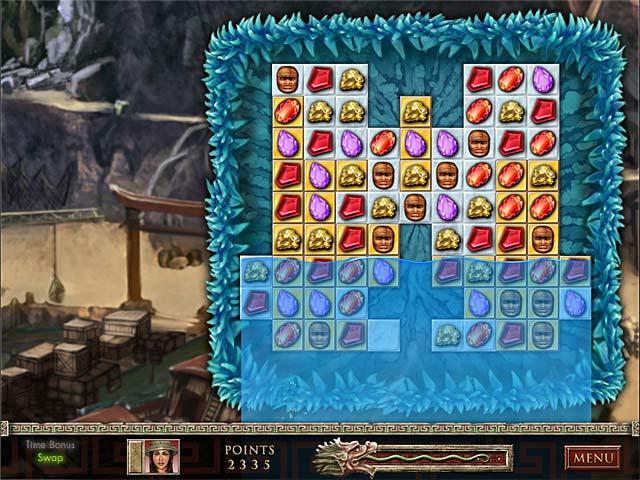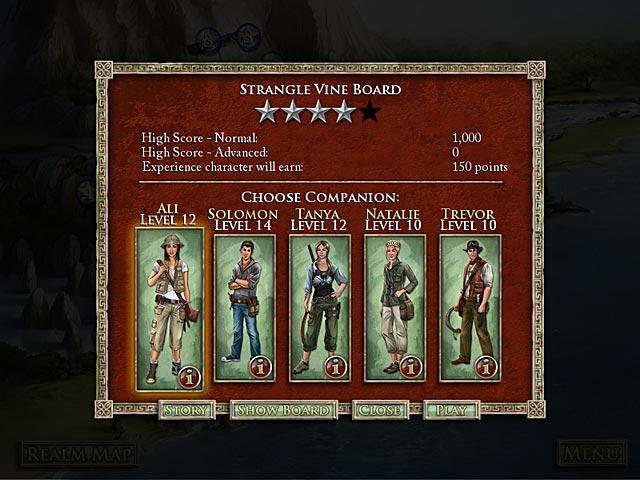- Wondering how to get Monopoly GO! free rolls? Well, you’ve come to the right place. In this guide, we provide you with a bunch of tips and tricks to get some free rolls for the hit new mobile game. We’ll …
Best Roblox Horror Games to Play Right Now – Updated Weekly
By Adele Wilson
Our Best Roblox Horror Games guide features the scariest and most creative experiences to play right now on the platform!The BEST Roblox Games of The Week – Games You Need To Play!
By Sho Roberts
Our feature shares our pick for the Best Roblox Games of the week! With our feature, we guarantee you'll find something new to play!All Grades in Type Soul – Each Race Explained
By Adele Wilson
Our All Grades in Type Soul guide lists every grade in the game for all races, including how to increase your grade quickly!
Jewel Quest: The Sapphire Dragon Review
Jewel Quest is one of the most established franchises in the match-three world, but over the years, competition from newer, flashier titles began to overshadow its name. The franchise is still kicking however, with the newest installment, Jewel Quest: The Sapphire Dragon, containing a wide variety of level types and a lengthy storyline that sees you helping a group of adventurers fight pirates and discover lost treasures.

Jewel Quest: The Sapphire Dragon
Jewel Quest is one of the most established franchises in the match-three world, but over the years, competition from newer, flashier titles began to overshadow its name. The franchise is still kicking however, with the newest installment, Jewel Quest: The Sapphire Dragon, containing a wide variety of level types and a lengthy storyline that sees you helping a group of adventurers fight pirates and discover lost treasures.
The Sapphire Dragon holds onto the series’ routes, with each level asking you to turn all of the gray tiles on the board gold by making matches of three or more like symbols on top of them. Depending on your difficulty choice (there are three), your progress can either be timed or not, with extra time on the clock giving you bonus points at the end of the level. This is important, as an experience point system is in play here, allowing you to level up many of the game’s main characters.

Each character has a trio of abilities that are either passive (like one that gives you an automatic boost in points at the beginning of every level) or activated (the “Random Gold” perk, for instance, turns random tiles gold when you make a match of five like gems). As you level up your characters, these abilities become stronger; that is, in the case of timed abilities like the aforementioned Random Gold perk, you’ll be able to turn more random tiles gold over a longer period of time. Leveling up your characters also unlocks journal entries, which help to flesh out the mostly shallow storyline.
In addition to simply asking you to turn tiles gold, each level also comes with a specific stipulation, which often matches cleverly back with the current progress in the story. For instance, when your characters are trying to access a secret area, you’ll need to play a board where half of the board is covered in stone or rubble, and only by making matches next to those pieces will they be removed, allowing you to see and eventually transform the rest of the board. As another example, if the story sees the characters avoiding falling rocks, large boulders will fall in that next level, crushing gems that are underneath them until they eventually fall off of the screen entirely.
Unfortunately, some of these stipulations cause the levels to be overly complex and challenging (and not challenging in a good way). The falling rock example above is the worst offender, as rocks block four squares at a time, whether they’ve been turned to gold or not, and tend to fall so frequently that you may only have the chance to make one or two matches before that same area of the board is covered again. Needless to say, you can sometimes spend your entire time limit trying to turn a single gray square to gold, simply because those large, unbreakable boulders keep covering them up. Furthermore, a fire and ice level type often sees whole sections of the board being blocked off by ice, which can only be removed by moving a flaming tile next to it. If those ice tiles are near the top of the board, it can seem almost impossible to do anything about them.

The rest of the game’s levels are packed with additional variety, and they fair much better. For instance, you may need to make matches close to the edge of the board to unlock more gray squares, or you may even be given a massive game board with a set path created with gray tiles. You’ll then need to connect the two ends of the path by making matches that touch the tiles that are already gold (think of a fuse heading towards dynamite).
Outside of the gameplay itself, you’ll be treated to (unfortunately) lifeless cutscenes with static images and character models that pop in from the sides of the screen. The game’s characters are given voice work that is actually fairly well done, so the lack of movement in these cutscenes (and the outdated graphical design) is incredibly disappointing. Still, you can quickly read the dialog and skip the rest of the scenes, if you wish to get straight back to the actual game.
With so many titles being available in the match-three genre, developers are forced to try new things to make the newest games appeal to those gamers that have seen and played it all. It’s admirable to see iWin add so much variety to the Sapphire Dragon’s level design, but some of them are simply too complex for their own good and really drag the rest of the experience down. Unless you’re a diehard fan of previous Jewel Quest titles, this might be one to consider downloading the trial for first.

The good

The bad
More articles...
Monopoly GO! Free Rolls – Links For Free Dice
By Glen Fox
Wondering how to get Monopoly GO! free rolls? Well, you’ve come to the right place. In this guide, we provide you with a bunch of tips and tricks to get some free rolls for the hit new mobile game. We’ll …Best Roblox Horror Games to Play Right Now – Updated Weekly
By Adele Wilson
Our Best Roblox Horror Games guide features the scariest and most creative experiences to play right now on the platform!The BEST Roblox Games of The Week – Games You Need To Play!
By Sho Roberts
Our feature shares our pick for the Best Roblox Games of the week! With our feature, we guarantee you'll find something new to play!All Grades in Type Soul – Each Race Explained
By Adele Wilson
Our All Grades in Type Soul guide lists every grade in the game for all races, including how to increase your grade quickly!







